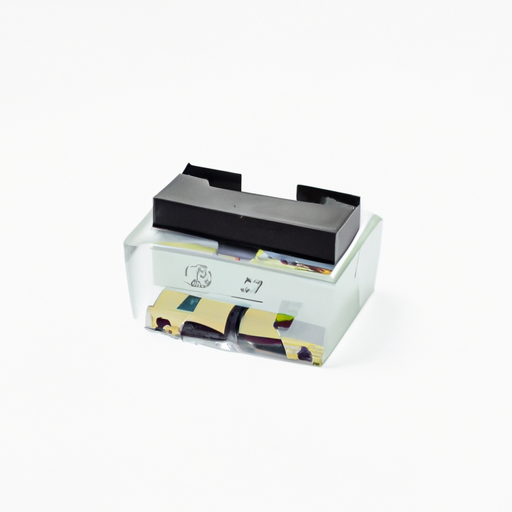Solid state relays (SSRs) are electronic switching devices that have become increasingly popular in a wide range of applications due to their numerous advantages over traditional electromechanical relays. These advantages include faster switching speeds, longer lifespan, lower power consumption, and higher reliability. In this article, we will explore the key product features of solid state relays and discuss how they can benefit various industries and applications.

Another key feature of solid state relays is their long lifespan. Because SSRs do not have any moving parts, they are not subject to the wear and tear that can affect electromechanical relays. This results in a longer operational life for SSRs, making them a cost-effective solution for applications that require frequent switching.
Solid state relays also offer lower power consumption compared to electromechanical relays. SSRs typically have lower control currents and do not require a continuous power supply to maintain their state, which can lead to significant energy savings over time. This makes SSRs an environmentally friendly option for applications that require high efficiency and low power consumption.
In addition to their fast switching speeds, long lifespan, and low power consumption, solid state relays also offer higher reliability than traditional relays. Because SSRs do not have any mechanical parts that can fail, they are less prone to malfunctions and are more resistant to shock and vibration. This makes SSRs a reliable choice for critical applications where downtime is not an option.
Solid state relays are also compact and lightweight, making them easy to install and integrate into existing systems. Their small size and low profile make them ideal for applications where space is limited, such as in industrial control panels, HVAC systems, and medical equipment.
One of the key advantages of solid state relays is their ability to switch both AC and DC loads. Unlike electromechanical relays, which are typically designed for either AC or DC applications, SSRs can switch both types of loads with ease. This versatility makes SSRs a versatile solution for a wide range of applications, from motor control to lighting control to power distribution.
Solid state relays also offer improved safety features compared to traditional relays. SSRs typically have built-in protection circuits that can detect overcurrent, overvoltage, and overtemperature conditions, and automatically shut off the relay to prevent damage to the load or the relay itself. This added layer of protection makes SSRs a safer option for applications where safety is a top priority.
Overall, solid state relays offer a wide range of product features that make them an attractive choice for a variety of applications. From their fast switching speeds and long lifespan to their low power consumption and high reliability, SSRs provide numerous benefits that can help improve the performance and efficiency of systems in industries such as industrial automation, HVAC, medical, and more. With their compact size, versatile switching capabilities, and advanced safety features, solid state relays are a versatile and reliable solution for a wide range of applications.
Solid state relays (SSRs) are electronic switching devices that have become increasingly popular in a wide range of applications due to their numerous advantages over traditional electromechanical relays. These advantages include faster switching speeds, longer lifespan, lower power consumption, and higher reliability. In this article, we will explore the key product features of solid state relays and discuss how they can benefit various industries and applications.

Another key feature of solid state relays is their long lifespan. Because SSRs do not have any moving parts, they are not subject to the wear and tear that can affect electromechanical relays. This results in a longer operational life for SSRs, making them a cost-effective solution for applications that require frequent switching.
Solid state relays also offer lower power consumption compared to electromechanical relays. SSRs typically have lower control currents and do not require a continuous power supply to maintain their state, which can lead to significant energy savings over time. This makes SSRs an environmentally friendly option for applications that require high efficiency and low power consumption.
In addition to their fast switching speeds, long lifespan, and low power consumption, solid state relays also offer higher reliability than traditional relays. Because SSRs do not have any mechanical parts that can fail, they are less prone to malfunctions and are more resistant to shock and vibration. This makes SSRs a reliable choice for critical applications where downtime is not an option.
Solid state relays are also compact and lightweight, making them easy to install and integrate into existing systems. Their small size and low profile make them ideal for applications where space is limited, such as in industrial control panels, HVAC systems, and medical equipment.
One of the key advantages of solid state relays is their ability to switch both AC and DC loads. Unlike electromechanical relays, which are typically designed for either AC or DC applications, SSRs can switch both types of loads with ease. This versatility makes SSRs a versatile solution for a wide range of applications, from motor control to lighting control to power distribution.
Solid state relays also offer improved safety features compared to traditional relays. SSRs typically have built-in protection circuits that can detect overcurrent, overvoltage, and overtemperature conditions, and automatically shut off the relay to prevent damage to the load or the relay itself. This added layer of protection makes SSRs a safer option for applications where safety is a top priority.
Overall, solid state relays offer a wide range of product features that make them an attractive choice for a variety of applications. From their fast switching speeds and long lifespan to their low power consumption and high reliability, SSRs provide numerous benefits that can help improve the performance and efficiency of systems in industries such as industrial automation, HVAC, medical, and more. With their compact size, versatile switching capabilities, and advanced safety features, solid state relays are a versatile and reliable solution for a wide range of applications.